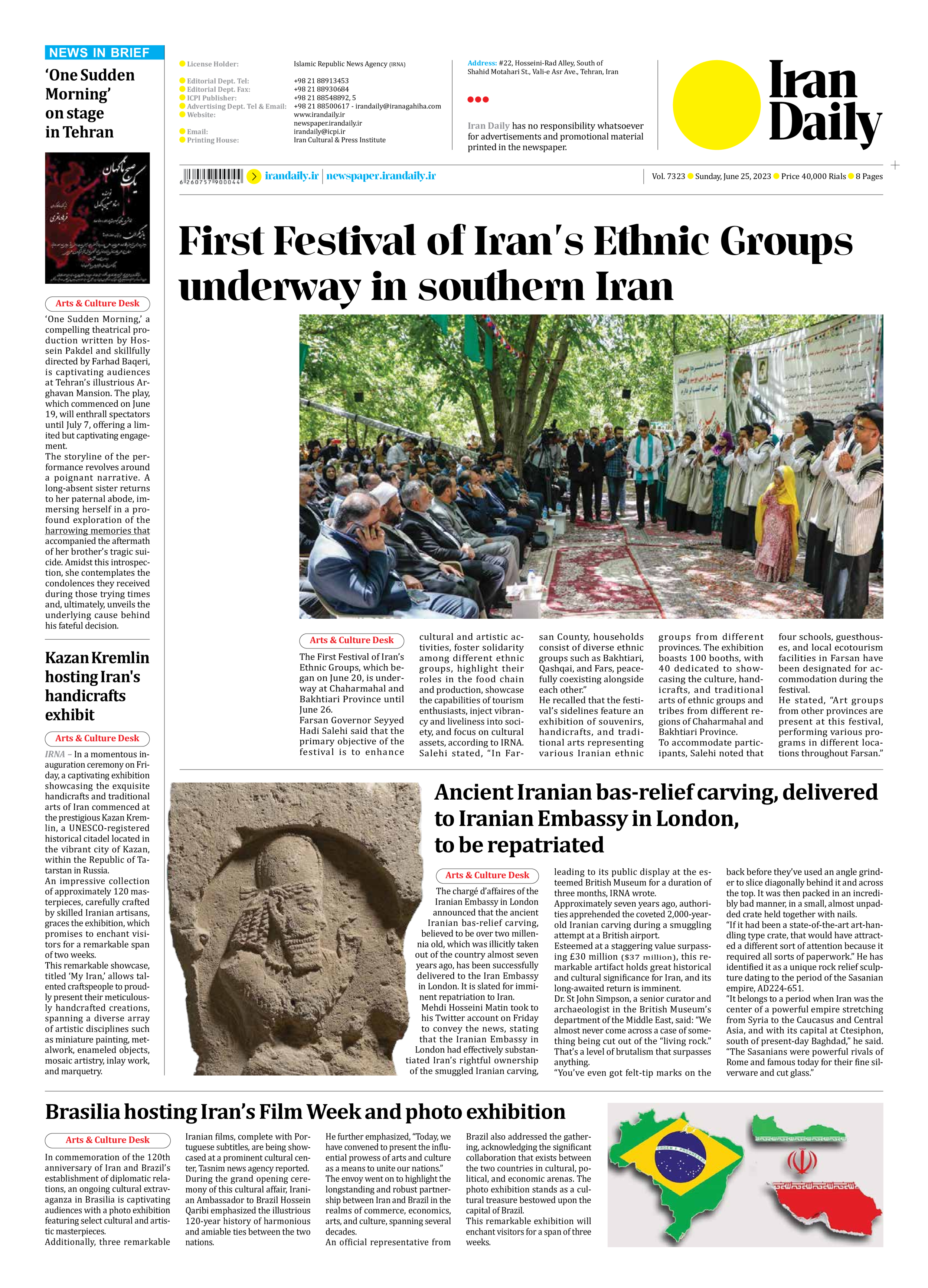
Ancient Iranian bas-relief carving, delivered to Iranian Embassy in London, to be repatriated
The chargé d’affaires of the Iranian Embassy in London announced that the ancient Iranian bas-relief carving, believed to be over two millennia old, which was illicitly taken out of the country almost seven years ago, has been successfully delivered to the Iran Embassy in London. It is slated for imminent repatriation to Iran.
Mehdi Hosseini Matin took to his Twitter account on Friday to convey the news, stating that the Iranian Embassy in London had effectively substantiated Iran’s rightful ownership of the smuggled Iranian carving, leading to its public display at the esteemed British Museum for a duration of three months, IRNA wrote.
Approximately seven years ago, authorities apprehended the coveted 2,000-year-old Iranian carving during a smuggling attempt at a British airport.
Esteemed at a staggering value surpassing £30 million ($37 million), this remarkable artifact holds great historical and cultural significance for Iran, and its long-awaited return is imminent.
Dr. St John Simpson, a senior curator and archaeologist in the British Museum’s department of the Middle East, said: “We almost never come across a case of something being cut out of the “living rock.” That’s a level of brutalism that surpasses anything.
“You’ve even got felt-tip marks on the back before they’ve used an angle grinder to slice diagonally behind it and across the top. It was then packed in an incredibly bad manner, in a small, almost unpadded crate held together with nails.
“If it had been a state-of-the-art art-handling type crate, that would have attracted a different sort of attention because it required all sorts of paperwork.” He has identified it as a unique rock relief sculpture dating to the period of the Sasanian empire, AD224-651.
“It belongs to a period when Iran was the center of a powerful empire stretching from Syria to the Caucasus and Central Asia, and with its capital at Ctesiphon, south of present-day Baghdad,” he said. “The Sasanians were powerful rivals of Rome and famous today for their fine silverware and cut glass.”







